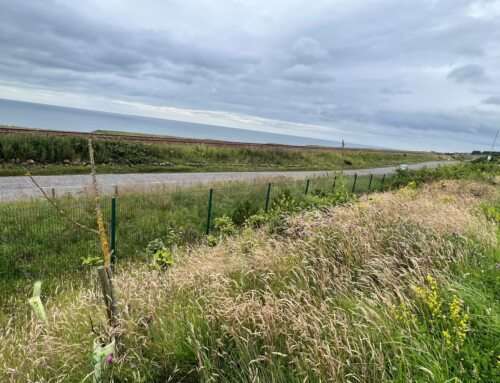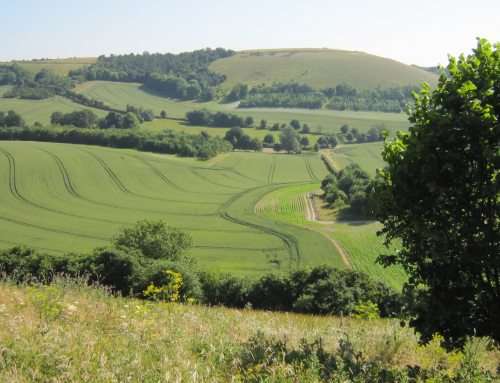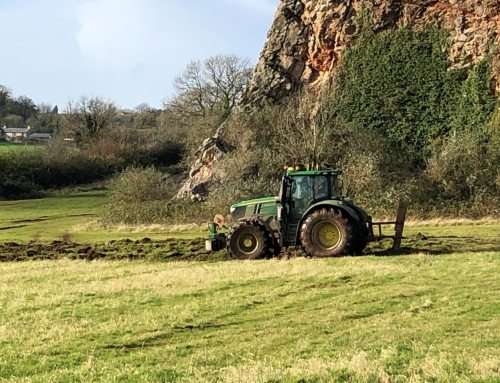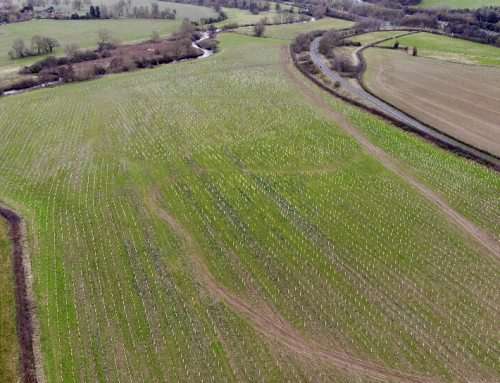Soil Carbon Survey
Site: Swadlincote
Client: Mountpark Developments Ltd
Departments Involved: Soils, Forestry, Ecology

Overview
Mountpark Developments Ltd aimed to convert an arable site in Derbyshire into a species-rich diverse habitat as well as increasing carbon sequestration. Nicholsons departments for soil, forestry and ecology were all involved in the project. This case study explores the involvement of the soils division, including the execution of soil surveys, carbon sequestration and biodiversity enhancement options.
Context
The location of the site is in south Derbyshire. Sloping down to the Repton Brook in the north, the site covers approximately 21ha. Background research identified the site as having a mudstone, siltstone and sandstone geology.
The Swadlincote site aimed to convert arable agricultural land to woodland, parkland, grassland and wetland with biodiversity enhancements. The conversion of land use is researched to predict the increase in soil organic carbon; therefore, it was important to establish the baseline organic carbon stocks.
Challenges
Unexpected torrential rain hindered the first day of soil field surveys. However, a brighter second day of surveying allowed comprehensive soil testing to continue.
What We Did
A field soil survey was conducted by Nicholsons’ soil division. The soil was augered and the following properties were analysed in the field: topsoil and subsoil depth, texture, colour, mottles, stone percentage, moisture, firmness and consistency, structure and calcium carbonate. An indicative soil association was allocated to areas of the site.
Soil samples were carefully obtained from the site at Swadlincote and subjected to a comprehensive laboratory analysis, encompassing assessments for soil organic matter, soil organic carbon and various soil nutrients. Evaluating soil organic carbon content provides essential insights into the soil’s potential for carbon sequestration.
The results of the soil analysis offered data which informed decision-making for which wildflower species to plant and sow in different areas of the site. Biodiversity enhancement options were highlighted, including woodland ground flora bulbs, wildflower seeds for sandy and loamy soil, wetland vegetation seeds and plugs, along with bird seed. Nicholsons cooperated with a contractor, who successfully seeded the site, along with the planting of common reeds in wetland scrapes.


Outcomes
- The carbon data allowed Nicholsons to predict the potential for an increase in soil organic carbon stocks.
- The biodiversity of the site has increased substantially since the operation of seeding and planting.
- For additional information, an ecology and forestry case study are available to read.
Highlights
Soil properties were observed and tested in the field, as well as sent to a laboratory. To the south of the site, the soils were sandy, with a baseline organic carbon stock of 42t/ha. To the north, the soils were clayey with baseline stocks of 63t/ha. This baseline soil carbon data provided insights into carbon sequestration potential. Soil analysis also informed decision-making for biodiversity enhancement options.
Nicholsons collaborated with a contractor for the successful seeding of wildflowers and bird seed mix. Along with the addition of common reeds in wetland scrapes for ecosystem and biodiversity enrichment.






